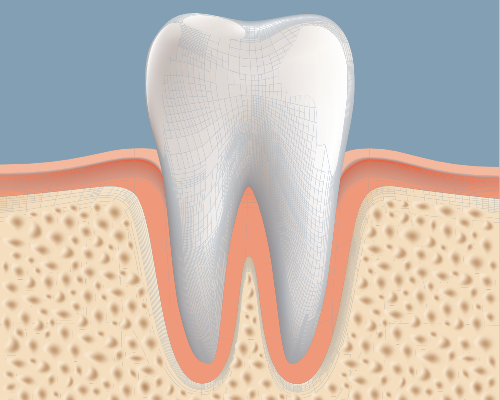
Bone grafting is a straightforward procedure that is immensely beneficial for numerous reasons. In the instance of a missing tooth (or teeth), the jaw bone can begin to slowly degrade. The jaw bone holds teeth in place, and once a tooth is no longer present, the bone doesn’t have anything to support. There are different types of bone grafts:
Little Bone Graft
In the case of a simple, single lost tooth, the ideal course of action is to not lose excess bone. In this process, sterile, demineralized human bone granules are packed into the tooth socket immediately after tooth extraction. This procedure is very simple, and does not add anything to your recovery time. Over the next several weeks, your own bone will fill the tooth socket and preserve the bone height enough for you to have the area restored.
Medium Bone Grafts
If a tooth was removed a long time ago, there is likely to already be some bone loss impeding the restoration of the area. In this case, the area of the missing tooth is opened with a small incision, the bone surface is prepared, and demineralized bone graft granules are used to build up the area. Many surgeons prefer to use a little bit of the patient’s own bone in this procedure in order to ensure the best results possible. If your own bone is used, your surgeon will take it from another area of the jaw bone, usually near the wisdom tooth area, shaving off tiny granules and combining them with the demineralized bone. The bone graft will heal and integrate with the surrounding bone tissue. This type of graft can be used for one or multiple areas of missing teeth.
Big Bone Graft
Patients who have many missing teeth and who have been missing many teeth for many years, have often experienced advanced bone loss. In those who wear dentures, the lower jaw bone often recedes so severely that they can no longer wear them. Extensive bone grafting is necessary in order to consider restorative methods. A combination of demineralized, sterile human bone and the patient’s own bone is used to restore the jaw bone, creating enough width and height to consider dental implants. The patient’s bone is supplied by another part of the jaw, hip, or tibia. Bone granules are also used to enhance and strengthen the graft.
Bone grafting is a surgical procedure that takes time. However, it plays an essential role in making new teeth possible, and will ultimately be a positive process! For more information, call 806-792-6291 today for a consultation with West Texas Oral Facial Surgery